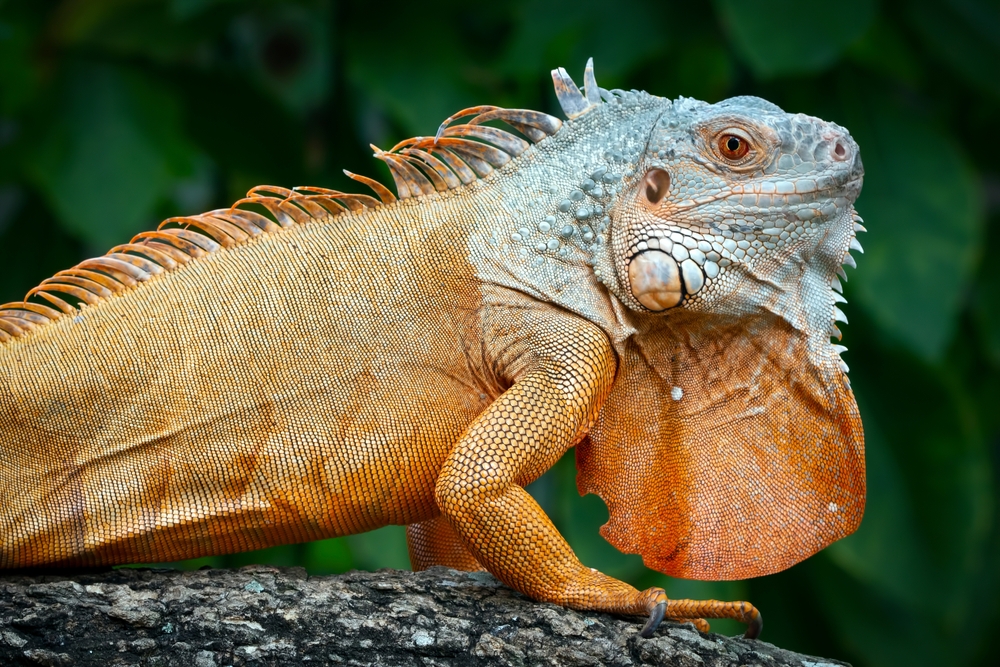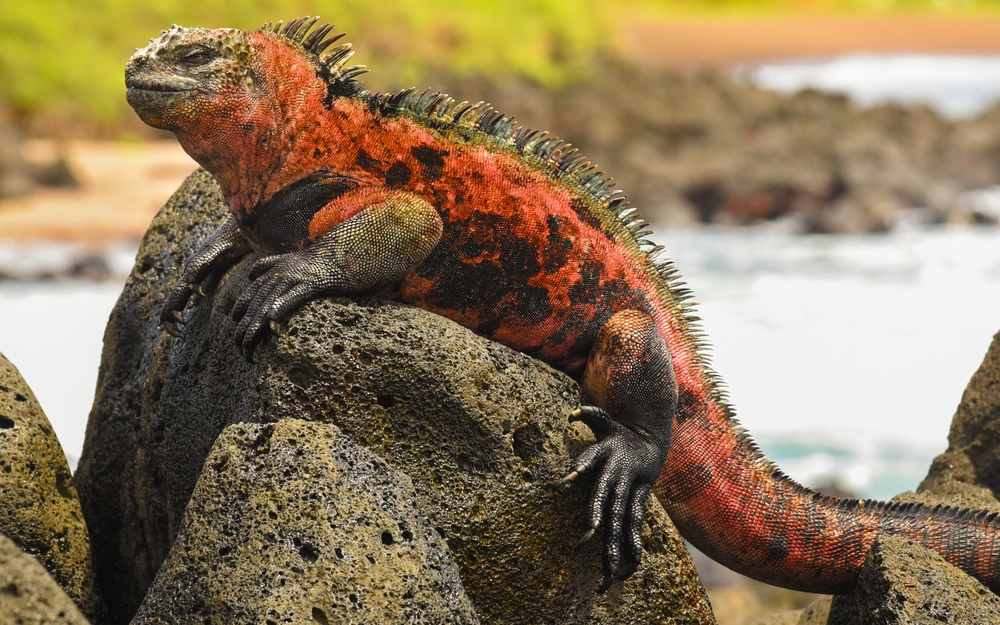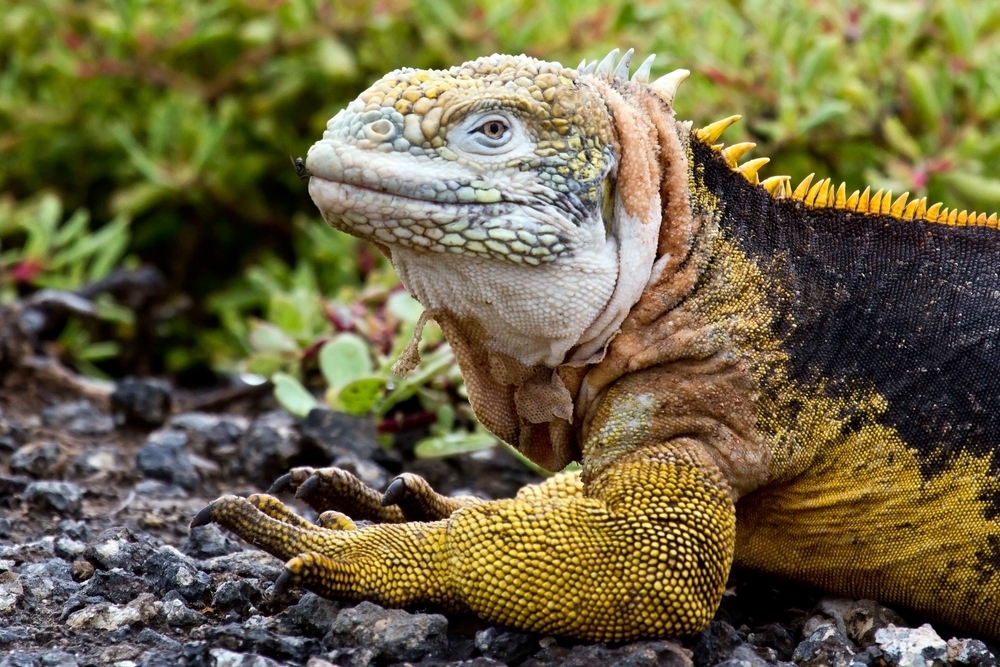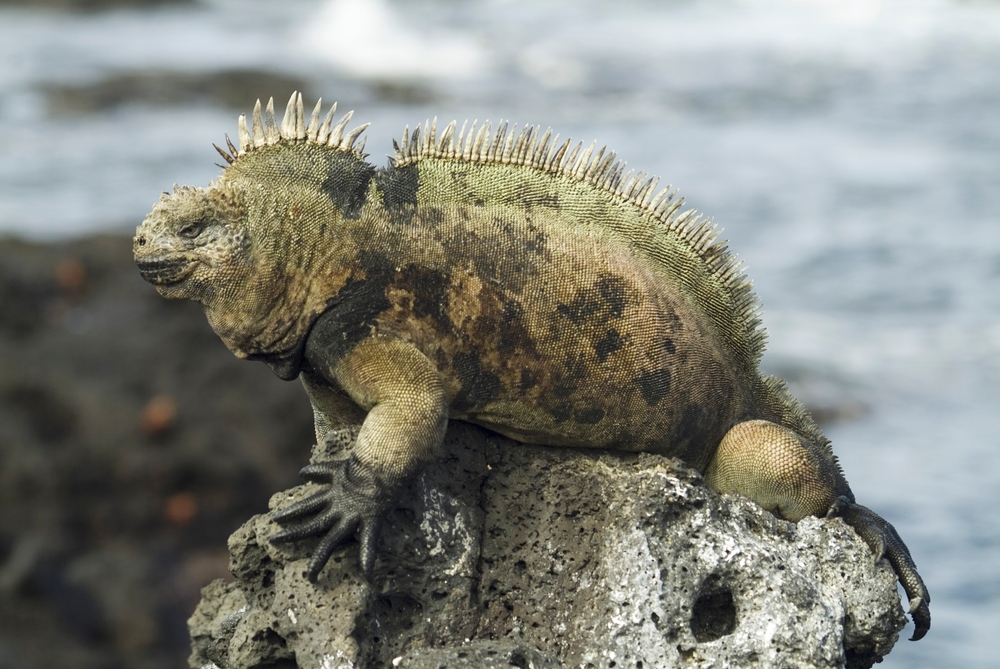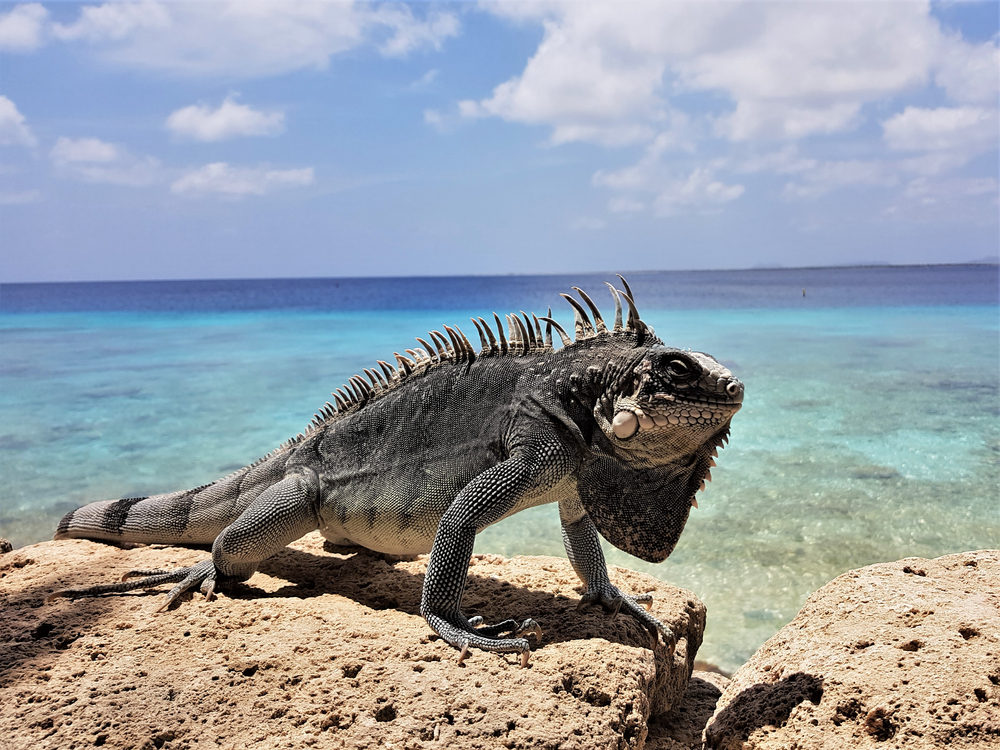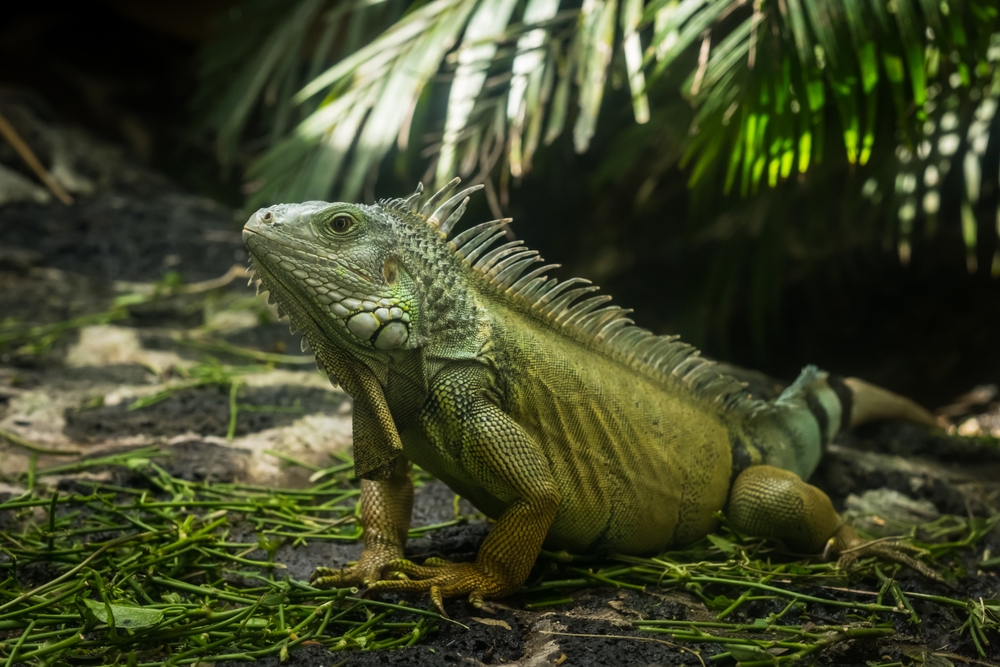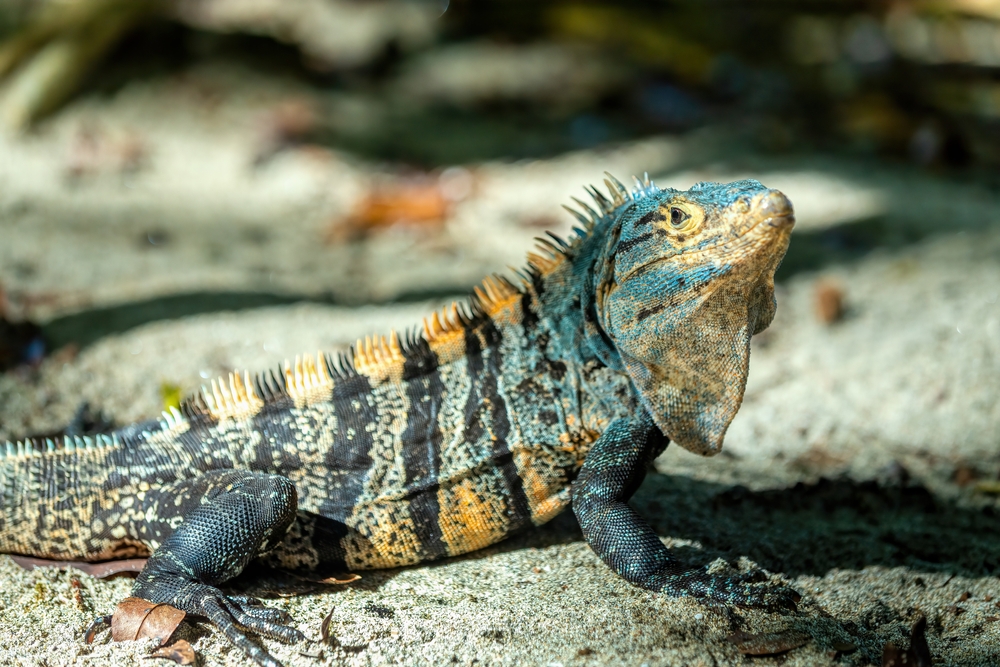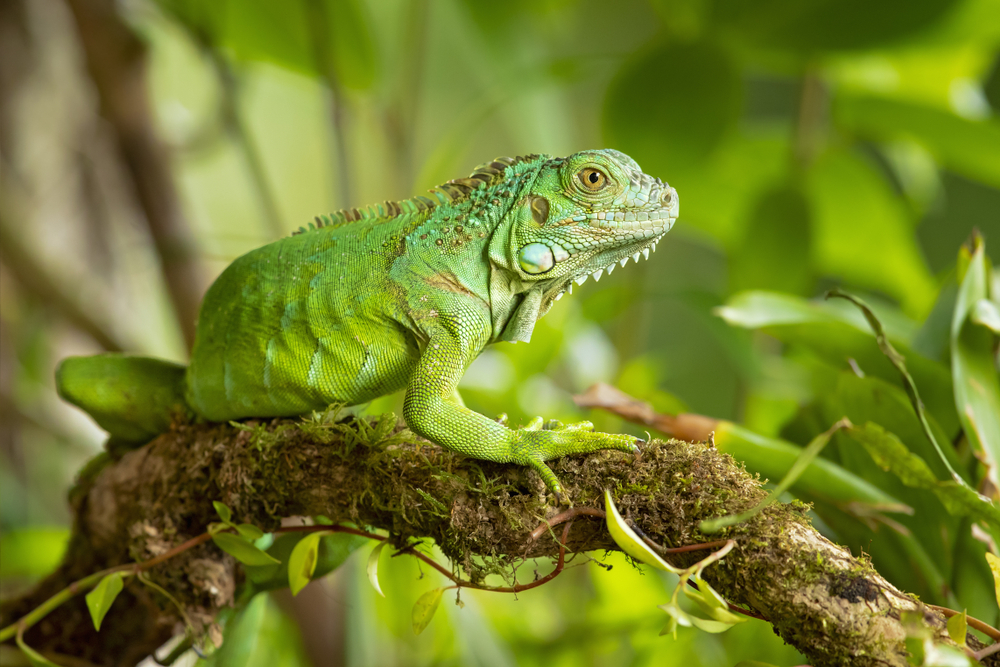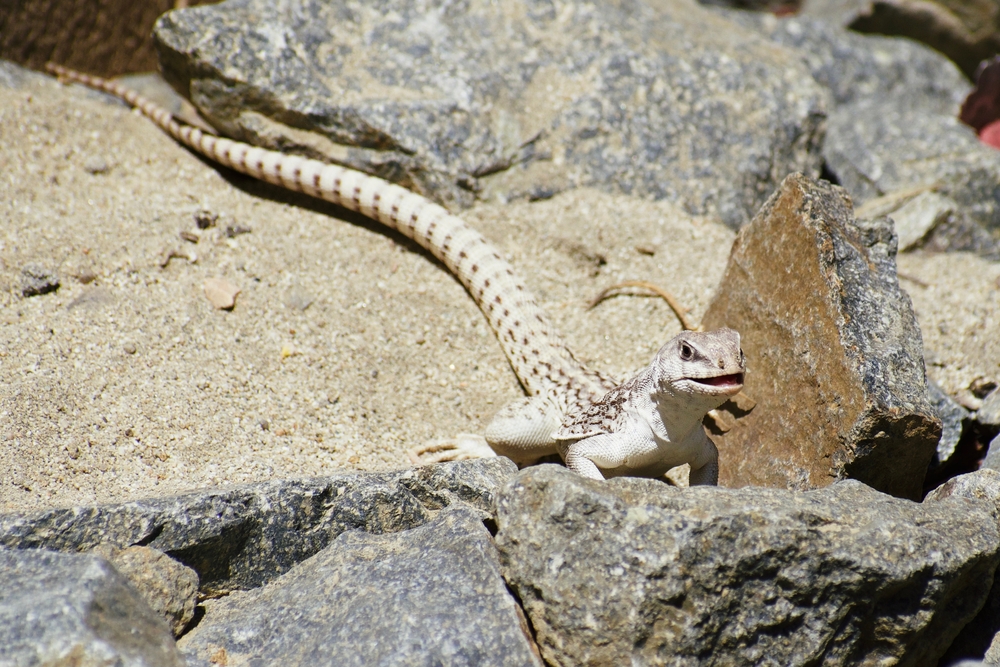The Red-Crested Iguana (Brachylophus vitiensis) is a visually striking reptile endemic to Fiji, known for its vibrant coloration and distinct physical features that set it apart from other iguanid species.
Coloration and Appearance:
-
Males exhibit a vivid green body with bold red to reddish-orange crests running along the back and nape. These crests are particularly prominent during the breeding season and are used in displays of dominance or courtship.
-
Females tend to be a duller green with reduced or absent red crests, providing better camouflage.
-
Both sexes may display white to pale blue banding or blotching along the body, which becomes more defined with age.
Head and Facial Features:
-
The head is relatively short and angular, with a blunt snout and a row of small spines or tubercles along the midline.
-
Eyes are large with round pupils, adapted for sharp daytime vision.
-
Males typically have a more prominent dewlap (a fold of skin under the throat) than females, which is used for territorial signaling.
Body Structure:
-
The body is laterally compressed with strong limbs and clawed toes, ideal for gripping branches and navigating forest canopies.
-
Like other arboreal iguanas, it has a long, tapering tail that aids in balance and can act as a defensive whip.
-
The dorsal crest, consisting of triangular spines, is most pronounced in males and extends from the back of the neck to the upper tail base.
Size:
-
Length (Body + Tail): Adult males can reach up to 30 in (76 cm), with females slightly smaller at 24–27 in (61–69 cm). The tail makes up roughly two-thirds of the total length.
-
Snout-to-Vent Length (SVL): Averages 6–9 in (15–23 cm), depending on sex and individual growth.
-
Weight: Typically ranges from 0.5 to 1.1 lbs (225 to 500 g).
Adaptations and Locomotion:
-
The Red-Crested Iguana is diurnal and arboreal, meaning it is active during the day and primarily lives in trees.
-
It is an excellent climber, with sharp claws and sticky toe pads for maneuvering through dense foliage.
-
Skin color may subtly shift in response to light or mood, especially during basking or social interactions.
The Red-Crested Iguana’s vibrant appearance, pronounced sexual dimorphism, and specialized adaptations make it one of the most distinctive and beautiful iguanid species in the Pacific region. Its striking red crest and arboreal agility are key to its survival in the tropical forests of Fiji.



































































